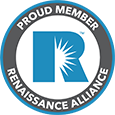Although OSHA has established many standards to protect employees in the workplace, the agency doesn’t have any official regulations regarding everyday heat exposure.
According to the National Safety Council, nearly 250 people die from exposure to excessive temperatures every year, and many more experience injuries from heat exhaustion and heat stroke. As a result, over 130 organizations have recently petitioned OSHA to create a standard that provides at-risk employees with rest breaks, access to shade and other protections.
The National Institute for Occupational Safety and Health (NIOSH) has recommended that OSHA create a heat standard three times—in 1972, 1986 and 2016. Even though OSHA has supported NIOSH’s framework for the standard and created heat exposure guidelines, the agency can only examine heat-specific hazards under its general duty clause for employers to provide a generally safe work environment.
All businesses need to take care to protect their workforces from dangerously high temperatures. Here are some strategies you can use to protect your employees from the heat:
- Increase ventilation at your workplace by using air conditioning, setting up cooling fans or installing insulation around hot surfaces.
- Encourage employees to download the OSHA-NIOSH heat safety tool on their iOS or Android smartphone.
- Train employees on how to recognize the early signs of heat-related illnesses, such as red skin, nausea, confusion, heavy sweating, cramps and dizziness.
- Schedule physical work during times when the temperature is lower, such as the early morning or late afternoon.
- Make sure that your employees have access to water in their work areas, and encourage them to take small drinks every 15 minutes—even if they aren’t thirsty.
- Let your employees take more frequent breaks as the temperature rises.
- Keep in mind that anyone who hasn’t been exposed to excessive heat for a long period of time may need to allow extra time for their body to reacclimatize.
OSHA Releases New Resources to Help Businesses Comply With Silica Rule
OSHA’s new silica rule for the general industry recently went into effect, which lowered the permissible exposure limit for the substance to 50 micrograms per cubic meter of air (50 µg/m3) and requires employers to take other steps to protect employees. Now, the agency has released new tools to help employers comply with the new standard.
Many of the new materials focus on silica risks that are specific to the construction industry, which has had to adhere to the new standard since last year. Here’s an overview of the new OSHA resources:
- An informational video on the hazards associated with respirable silica
- A series of shorter videos on control methods for specific tasks in the construction industry
- A customizable presentation to help train construction employees on the dangers of silica exposure and how to protect themselves
- An FAQ webpage on the new standard
OSHA Proposes Eliminating Forms 300 and 301 From Electronic Reporting Rule
OSHA has proposed rescinding two major parts of its electronic reporting rule in order to protect employees’ sensitive information. The agency also stated on its website that it’s no longer accepting electronic data from OSHA Forms 300 or 301, even though the change is still technically a proposal.
In the proposed rule, OSHA stated that the change will prevent sensitive personal information from being released under the Freedom of Information Act. The agency also noted that the effort of submitting Forms 300 and 301 is an unnecessary burden on employers given the uncertain benefits of obtaining the data.
Public health advocacy groups have challenged the proposal in court and argued that OSHA’s sudden move to state that it won’t accept data bypasses the rule-making process. Other lawmakers believe that OSHA should establish guidelines for submitting the forms without releasing personal information.
To see OSHA’s full notice of proposed rule-making, visit the Federal Register’s publication.
$10.5M in Grants Announced for Safety and Health Training
The Susan Harwood Training Grant Program recently received $10.5 million in grants to help support hands-on safety training. This OSHA program focuses on interactive training programs and other resources in order to help with safety training for small businesses, high-risk industries, temporary employees and more.
According to OSHA, the grants will help improve the development of quality training and prevent workplace hazards. The program also helps employers with limited training resources provide their employees with a way to identify hazards before they become a danger.
Anastasi Insurance Agency, Inc.
(508) 248-1440

